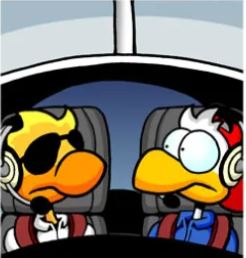
|
Vol 78 |
Page 14 |
|
Privacy Policy | Editorial Policy | Profit Policy | Join the Association | List of Members | Contact us | Index | Links |
|
Back Go to page: 1 2 3 4 5 6 7 8 9 10 11 12 13 14 15 16 17 18 19 20 Forward |
|
John Laming
Aircraft and other stuff. |
|
Contents.
Flight Directors - a fatal attraction.
|
|
Flight Directors – A fatal attraction.
My first encounter with flight directors was in 1966 while undergoing conversion to the Avro 748.
|
|
|
|
The RAAF had seen fit to send me to Woodford in Cheshire, all the way from Australia, to ferry the second of several new 748s for the RAAF VIP squadron at Canberra. The conversion was conducted on a battered 748 demonstrator: G-ARAY, known as Gary. The contract allowed four hours of dual for the captains and nothing for the co-pilots. G-ARAY had the basic instrument flying panel of that era and no flight director. Our instructors at Avro’s were well-known test pilots Bill Else, Tony Blackman and Eric Franklin. Jimmy Harrison was chief test pilot.
Unlike the bog-standard civilian 748, the RAAF 748s were to be equipped with a Collins FD 108 FD. So the situation existed that the RAAF 748s had a British Smith’s autopilot system which was married (somewhat expensively and painfully) to the American Collins FD 108. For the life of me, I could not see why a flight director was needed in the RAAF 748, after all, the approach speed was that of a DC-3 (80 knots) and the aircraft a delight to handle compared with the venerable Dak. In retrospect, I think the old Wing Commander Transport Ops at Department of Air, who was charged with the procurement of the 748 for RAAF service, and hadn’t flown for years, was perhaps conned by the Avro sales people, in conjunction with Collins, into buying the Collins systems. Certainly in my view as the squadron QFI, flight directors were not operationally needed.
In the event, the RAAF machines came with Collins FD 108 flight directors and, as the contract specified, each captain would be given only one hour of dual instruction once the 748 came out of the factory. First, a course was arranged at the Collins establishment at Weybridge in Surrey. The two RAAF captains and their co-pilots attended and our two navigators and our instrument fitters also turned up to enjoy the Collins hospitality. We learned about 45 degree automatic intercepts of the VOR and ILS beams and other goodies including V-bar interpretation. We were showered with glossy brochures of the flight director by white dust-coated lecturers and shown a film.
By lunch time, the presentation was complete and we were shouted to a slap up pub meal with lots of grog, all paid for by Collins. We asked what further lectures were to take place after lunch. We were told the course was over – it was just a morning’s job and we were free to leave unless we would like more drinks. Naturally it was churlish to refuse and hours later we staggered to the railway station (I think), smashed to the eye balls and having forgotten all about the marvels of 45 degree auto intercepts on the FD 108.
I must say it was a bloody good three-hour course what with the free grog and all that. A few weeks later, I flew the second RAAF aircraft out of the factory, A10-596, under the watchful eye of Eric Franklin DFC and he demonstrated flight director stuff. For example, to climb using the FD, you first put the aircraft into a normal climb and when settled you switched on the FD and carefully wound up the pitch knob so that the little aeroplane sat in the middle of the V-bars. I quickly realised that you hand-flew the basic artificial horizon to whatever attitude was appropriate for the manoeuvre then told the FD 108 V bars where you wanted them. The ILS intercept of 45 degrees was never used because radar vectors didn’t do such angles. I became more and more convinced the 748 didn’t need flight directors and that they were a load of bollocks in that type of low speed aircraft.
We were told the USAF used the FD 108 in its F4 Phantoms and that Collins was anxious to makes sales in the UK market. The RAAF Wing Commander got sucked in by good sales talk and from then on, all RAAF 748s became so equipped. I held personal doubts about the usefulness of flight directors in general as I could see even then their extended use could lead to degradation of pure instrument flying skills. Today’s flight director systems are light years ahead in sophistication compared with the old Collins FD 105 and 108 series but the problem with blind reliance on FD indications and thus steady degradation of manual instrument flying skills is as real now as it was back in 1966.
Now to the present day – although first some background history.
First published in 1967, Handling the Big Jets, written by the then British Air Registration Board’s chief test pilot David Davies, is still considered by some as the finest treatise still around on jet transport handling. Indeed, the book was described by the International Federation of Airline Pilot’s Associations (IFALPA) as “the best of its kind in the world”, written by a test pilot for airline pilots. The book is likely to become a standard text book, particularly recommended to all airline pilots who fly jets in the future, valuable to those pilots who are active in air safety work.
All that was back in 1967 and little has changed since then, apart from an increasing propensity for crashes involving loss of control rather than simply running into hills. LOC instead of CFIT. Mostly these accidents were caused primarily by poor hand-flying and instrument-flying skills, which certainly explains why aircraft manufacturers lead the push for more and more automatics. A colleague involved with Boeing 787 training was told by a test pilot on type, that the 787 design philosophy was based on the premise that incompetent crews would be flying the aircraft and that its sophisticated automatic protection systems were in place to defend against incompetent handling. Be it a tongue-in-cheek observation, it contains an element of truth.
With the plethora of inexperienced low-hour cadet pilots going directly into the second-in-command seats in many airlines in Asia, the Middle East and Europe, these protection systems are important.
Do these flight directors make flying safer or pilots lazier? Towards the end of his book, David Davies discusses the limitations of the flight instruments in turbulence and in particular the generally small size of the active part of the basic attitude information or the “little aeroplane” as many older pilots will remember it. He continues: “The preponderance of flight director and other information suppresses the attitude information and makes it difficult to get at” and “the inability, where pitch and roll information is split, to convey true attitude information at large pitch and roll angles in combination.” Finally Davies exhorts airline pilots “not to become lazy in your professional lives… the autopilot is a great comfort, so is the flight director and approach coupler… but do not get into the position where you need these devices to complete a flight.”
There is more but go and read the book.
Having done the unforgiveable and quoted freely from an eminent authority, it is time to say something original and accept the no doubt critical comment that is freely available. Flight Directors can be a fatal attraction to those pilots who have been brain-washed by their training system to rely on them at all times. While Boeing in their Flight Crew Training manual (FCTM) advise pilots to ensure flight director modes are selected for the desired manoeuvre, it also makes the point that the FD should be turned off if commands are not to be followed. Recently a new pilot to the Boeing 737 asked his line training captain if he could turn off the FD during a visual climb so he could better “see” the climb attitude. His request was refused as being “unsafe” and instead he was told to “look through” the FD.
I don’t know about you, but I find it impossible to “see” the little aeroplane when it is obscured by twin needles or V-bars. In fact, it takes a fair amount of imagination and concentration to do so, which may be why Boeing recommends pilots to switch off the FD if commands are not to be followed. I well recall my first simulator experience in the 737 of an engine failure at V2 where I was having a devil of a time trying to correct yaw and roll and the instructor shouting at me to “Follow the bloody flight director needles.” I learned a good lesson from that tirade of abuse on how not to instruct if ever I became a check pilot.
In later years, having gravitated to the exalted, or despised maybe, role of simulator instructor, my habit was to introduce the engine failure on take-off by first personally demonstrating to the student how it should be done on raw data; meaning without a flight director. I hoped by first demonstrating, the student could see the body angles or attitude rather than imagine them by trying to “look through” the dancing needles of the FD. I have always been an advocate of the Central Flying School instructional technique of demonstrate first so the student then knows what he is aiming for. Of course, in the simulator, the instructor runs the risk of stuffing up (been there – done that!) but it at least proves he is human and not just another screaming skull.
Recently, a 250-hour pilot with a type rating on the 737-300 (and trained overseas) booked a practice session prior to putting himself up to renew an instrument rating. His last rating was on a BE76 Duchess. As part of the 737 instrument rating would include manual flying on raw data, he was given a practice manual throttle, raw data take-off and climb to 3000 ft. He protested, saying he had never flown the simulator without the flight director.
General aviation pilots are no strangers to flight directors either, especially as glass cockpits become more popular. His instructions were to maintain 180 knots with Flaps 5 on levelling. He was unable to cope and when the instructor froze the simulator to save more embarrassment, the student was 2000 ft above cleared level and 270 knots – still accelerating with take-off thrust. The student had been totally reliant on following flight directors with their associated auto-throttles during his type rating course and without this aid he was helpless.
I believe this is more widespread than most of us would believe, especially as we tend to move in our own narrow circle of experience. At a US flight safety symposium, a speaker made the point that it is the less experienced first officers starting out at smaller carriers who most need manual flying experience and, airline training programs are focused on training pilots to fly with the automation, rather than without it. Senior pilots, even if their manual flying skills are rusty, can at least draw on experience flying older generations of less automated planes.
Some time ago, the FAA published a Safety Alert for Operators (SAFO) entitled Manual Flight Operations. The purpose of the SAFO was to encourage operators to promote manual flight operations when appropriate. An extract from the SAFO stated that a recent analysis of flight operations data (including normal flight operations, incidents and accidents) identified an increase in manual handling errors and “the FAA believes maintaining and improving the knowledge and skills for manual flight operations is necessary for safe flight operations.”
Now let me see, I recall similar sentiments nearly 50 years ago published in Handling the Big Jets when David Davies wrote that airline pilots should “not become lazy in your professional lives… the autopilot is a great comfort, so is the flight director and approach coupler but do not get into the position where you need these devices to complete the flight.”
It is a good bet that lip service will be paid by most US operators to the FAA recommendation to do more hand flying. It may have some effect in USA but certainly the majority of the world’s airlines, if they were even aware of the FAA stance in the first place (very doubtful), will continue to stick with accent on full automation from lift off to near touch-down and either ban or discourage their pilots from hand-flying on-line. If you don’t believe that, consider the statement in one European 737 Flight Crew Operating Manual (FCOM) from 20 years ago that said: “Under only exceptional circumstances will manual flight be permitted.” After all, when at least two major airlines in Southeast Asia have recently banned all take-off and landings by first officers because of their poor flying ability, then what hope is there to allow these pilots to actually touch the controls and hand-fly in good weather? One of those airlines requires the first officer to have a minimum of five years on type before being allowed to take off or land while the other stipulates the captain will do all the flying below 5000 ft.
|
|
|
|
It might stop Quick Access Recorder (QAR) pings and the captain wearing the consequences of the first officer’s lack of handling ability, but it sure fails to address the real cause and that is lack of proper training before first officers are shoved out on line. Sometimes you have to put your hands on the controls and fly raw data. I think the FAA missed a golden opportunity in its SAFO to note that practicing hand flying to maintain flying skills will better attain that objective if the flight director guidance is switched off. The very design of flight director systems concentrates all information into two needles (or V-bar) and in order to get those needles centred over the little square box, it needs intense concentration by the pilot. Normal instrument flight scan technique is degraded or disappears with the pilot sometimes oblivious to the other instruments because of the need to focus exclusively on the FD needles. Believe me, we see this in the simulator time and again.
Manual flying without first switching off FD information will not increase basic handling or instrument flying skills. The flight director is amazingly accurate provided the information sent to it is correct, but you don’t need it for all stages of flight. Given wrong information and followed blindly, it becomes a fatal attraction yet we have seen in the simulator a marked reluctance for pilots to switch it off when it no longer gives useful information. Instructors are quick to blame the hapless student for not following the FD needles. This only serves to reinforce addiction to the FD needles as they must be right because the instructor keeps on telling them so.
For type rating training on new pilots, repeated circuits and landings sharpen handling skills, yet it is not uncommon for instructors to teach students to enter waypoints around the circuit and then exhort the pilots “ fly the flight director” instead of having them look outside at the runway to judge how things are going. First officers are a captive audience to a captain’s whims. If the captain is nervous about letting his first officer turn off the flight director for simple climbs or descents, or even a non-threatening instrument approach, then it reflects adversely on the captain’s own confidence that he could handle a non-flight director approach.
The FAA has already acted belatedly in publicly recommending that operators should encourage more hand flying if conditions are appropriate but switch off the flight directors if you want real value for money, particularly with low-hour pilots.
It may save lives on the proverbial dark and stormy night and the generators play up.
I see people my age out there climbing mountains and riding skate boards and here I am feeling good about myself because I got my leg through my underwear without losing my balance.
Flying the Squawker Haunter.
Following a protracted gin and tonic session in the plush Hawker tent at Farnborough a few years ago, one of our staff pilots was privileged to make a short preview handling flight in the newly announced prototype Haunter. He has now recovered sufficiently to record a few brief impressions of this fabulous (sic) aircraft.
The Haunter Mk.1 is a combined high altitude ground attack aircraft equipped for photographic reconnaissance and aspects of air-sea rescue. The specification originally called for an inter-continental bomber specifically for the suppression of recalcitrant tribesmen of the Arabian hinterland, however, as the world situation has changed since the troubled days of 1923, the design was modified somewhat in the flight test stage. The only surviving part of the original spec. F.3/23 is the emergency drills, which were written in detail as an added safety factor; these drills, whilst sufficiently complex and confusing, have unfortunately now little relation to the emergencies commonly encountered in normal flight.
The aircraft is equipped with two double-sided twenty-eight stage
reversible pitch hydramatic Mambo engines. A major safety factor built
into these engines is that the actual installed thrust is well below the
design figure, thus ensuring that no part of the aircraft (other than
the oleos) can be over-stressed. The aircraft had originally been
designed as single-engined, but it was found at a late stage that one
Mambo of 10,800 lbs. nominal thrust
A slight change was also made to the Haunter airframe when it was found that, with power assisted controls, two men were necessary to shift the control column. The forward main fuel tank was immediately eliminated and a second no-vision canopy fitted, thus providing adequate space for the second pilot (providing, of course, that he wore the requisite elbow and knee protectors). The elimination of the surplus fuel capacity allowed performance figures to remain undiminished. At the same time manual reversion was fitted, though it is at present limited to ground operation only, owing to a marked aileron reversal at speeds above the stall. The control column has artificial feel in the form of yards of elastic, which takes the unnatural feeling out of flying in power. The elastic used was rather strong and an additional power control system was added to eliminate pilot fatigue; artificial feel is also built into the system so that flying the Haunter is still somewhat exhausting.
The Haunter is very modern in that it is fitted with dive brakes. These had to be fitted at a late stage, as at first there did not appear to be room for them. There is also a novel flying tail, though to be able to fly, the tail must be attached to the aircraft. It is hoped at a later stage of development to introduce flying ailerons.
The front cockpit is roomy and comfortable, and it is obvious that a lot of ingenuity has gone into arranging the mass of controls and indicators. Points worthy of especial note are: The hydramatic pre-selective throttles, enabling any unwanted power setting to be immediately obtained; the "carrot salad" controls and indicator, for night applications: the array of "Zero Reader" type fuel gauges neatly masked by the control column; the Hannick Indicator, or "Lost" horizon, for near vertical descents; the rotatable notepad and "flush" type dive brake lever; the new 999 channel, UHF by Missey's; and finally the dinky little mascot holder.
However, a point of minor criticism is that a desire for standardization, possibly motivated by understandable penny pinching, has led to the undercarriage, flap, seat raising and low pressure fuel cock levers being identical. Entry and egress from the aircraft is effected by a short ladder placed against the wing tip, which, owing to anthedral and wing flexing, is close to the ground. The crew can then walk up the wing and into the cockpit at their leisure. Exit has been noted to be far more rapid.
Starting is very simple. A length of fuse extends some distance from the nose intake which, on a given signal from the pilot, is lit by an armourer. This fuse burns fiercely for some two minutes. It then operates a series of relays and counter-balances which finally detonate an explosive charge. This charge envelopes the aircraft in smoke for some time, but it is powerful enough to move the aircraft forward from a standing start at some 15 knots. The pilot then carries out normal relight drill and if the airfield is below 15,000 ft, the engine will usually start. It was from this technique that the Haunter acquired the nickname amongst ground crew of the "Black Terror"
Take off requires no special technique and is purely a matter of time. Providing a runway of sufficient length can be found, no difficulties are expected in service use and the firm's pilots say that 10,000 metres should be adequate. General flying is very pleasant, although one must watch for a tendency for the aircraft to sink without prior warning.
There is no difficulty in the spin, which can be entered at any stage of flight. At any power setting below max. continuous in straight and level flight, burbling is immediately felt on all control surfaces. Approximately 15,000 feet is lost with startling rapidity, followed by one wing dropping, a quick inverted roll, and a final stabilization in a flat spin. The correct procedure is then to select gunsight down, airbrake out and full flap, wheels unlocked and brakes off. Jettison all external stores, put on full opposite rudder and aileron into the roll, at the same time alternating bursts of power on either engine. Wind tunnel tests show this will have no effect at all, but as the aircraft cannot be safely abandoned below 240 knots, it is a convenient way of passing the time.
Landing the Haunter does require a special technique, but it is thought that this will soon be acquired as landings are frequent and not always premeditated. Torque problems have not been entirely overcome, and it will be necessary for airfields to adopt a right hand circuit, owing to the natural tendency for the Haunter to fly that way. With the drop tanks fitted circuit height can be reached by the time fuel is low enough to re-join. This thoughtful arrangement makes flight planning easy and fuel reserves unnecessary. The exact method of landing the Haunter is still the subject of discussion between the firm's pilots and service representatives, but has been variously described as "hairy", "relatively simple", "fraught", "normal", "ugh", depending upon which side one approached.
As usual, a few minor modifications will be required before the aircraft can go into service. The Mod. programme has been extended to include Mod. 1379, which eliminates the common fault of canopy opening when the dive brakes are selected and the Mod. 2000 series of gun firing mods. which clear the aircraft for two gun firing with blank ammunition. (At present the guns are cleared for blank ammo only if the aircraft is inverted - Leconfield have now evolved a very satisfactory inverted quarter attack, but the problem of air to ground is fraught with difficulties).
All in all, the Squawker Haunter is a worthy predecessor to the Hawker Hart, the Supermarine Spitfire, and the Gloster Meteor and given the right conditions and a pilot trained from infancy, this aircraft will have no difficulty in holding its own if given a day's start.
|
|
As I watched the dog chasing its tail, I thought dogs are easily amused. Then I realised I was watching the dog chase his tail. |
|
|
|
|
|
Back Go to page: 1 2 3 4 5 6 7 8 9 10 11 12 13 14 15 16 17 18 19 20 Forward |
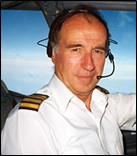
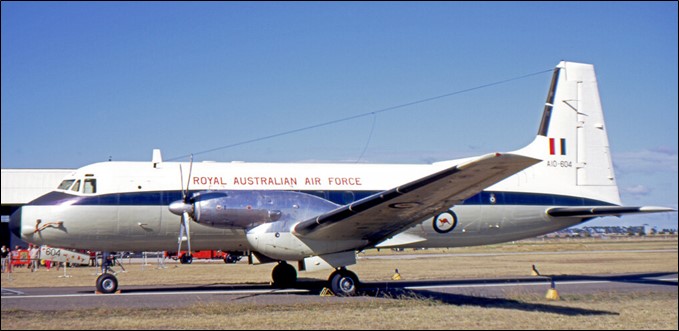

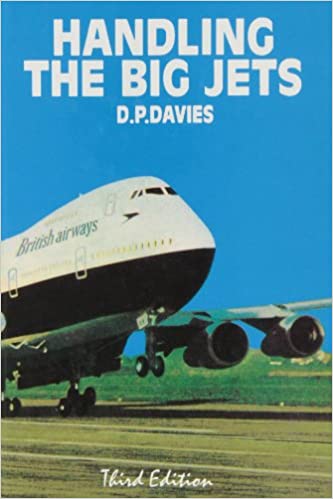
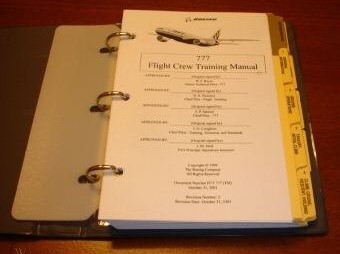
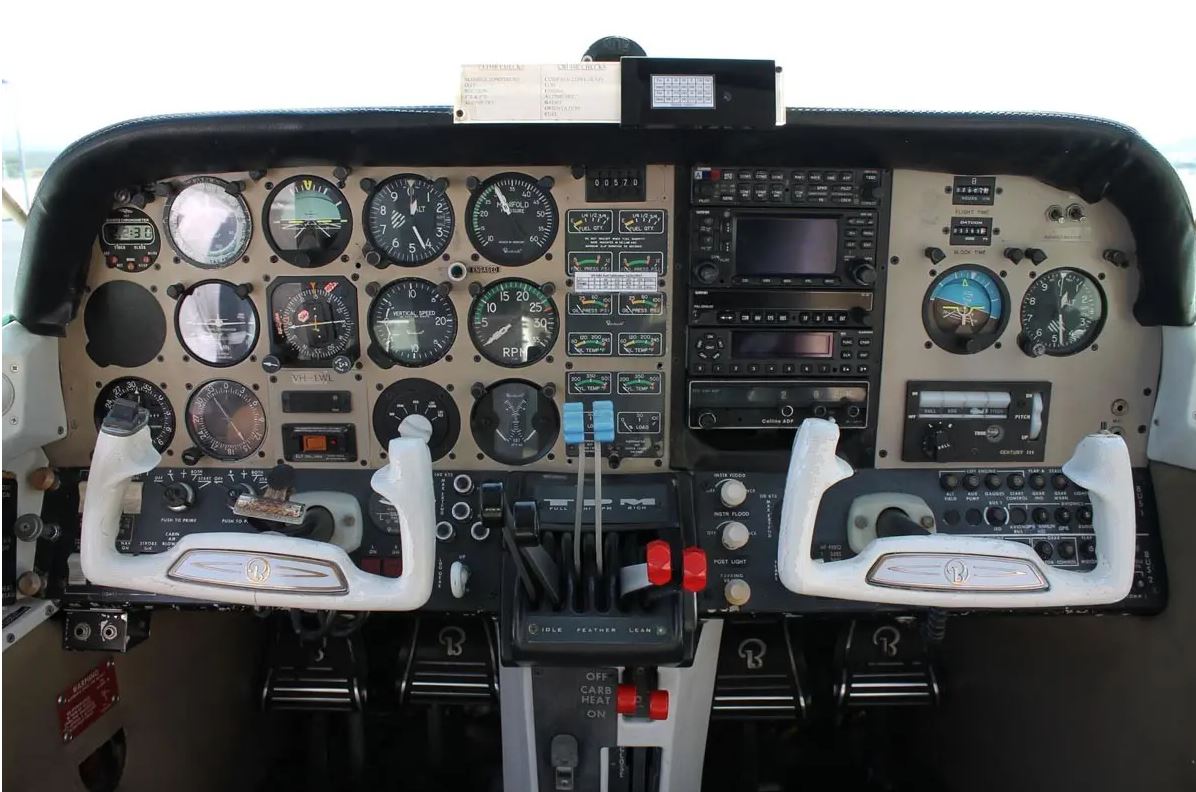
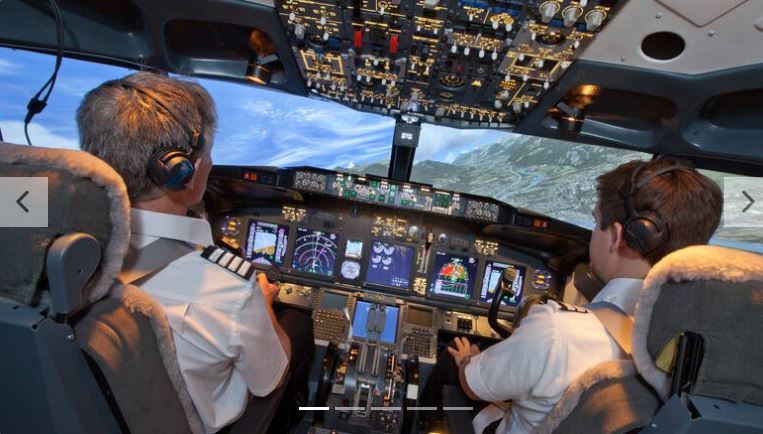

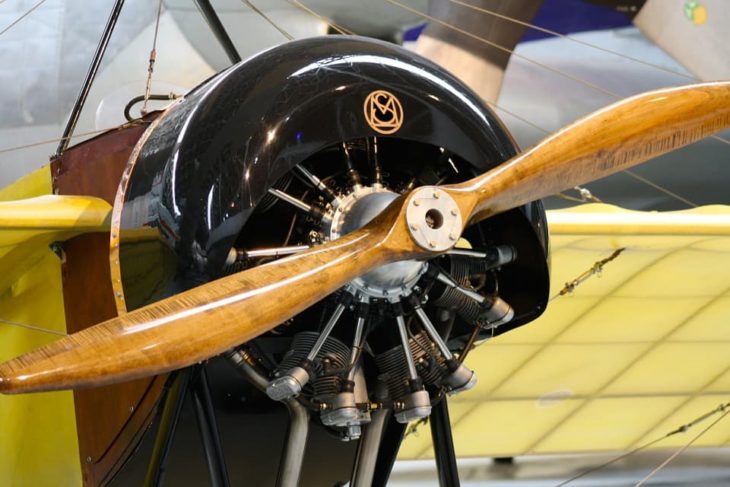 was only sufficient to taxy the aircraft slowly, so the second Mambo was
added to give the necessary combat capability. The Haunter in its
present configuration can now climb straight and level and maintain
level flight at take-off power. It enters a glide path very smoothly at
a steady 1,500 ft/min when throttled back to max. continuous (i.e. below
the surge line). With these capabilities in mind, a number of optimum
flight profiles have been devised by Central Fighter Establishment, none
of which takes the aircraft far out of the circuit, thus providing,
inter alia, the rapid landing facility required for the F.3/23.
was only sufficient to taxy the aircraft slowly, so the second Mambo was
added to give the necessary combat capability. The Haunter in its
present configuration can now climb straight and level and maintain
level flight at take-off power. It enters a glide path very smoothly at
a steady 1,500 ft/min when throttled back to max. continuous (i.e. below
the surge line). With these capabilities in mind, a number of optimum
flight profiles have been devised by Central Fighter Establishment, none
of which takes the aircraft far out of the circuit, thus providing,
inter alia, the rapid landing facility required for the F.3/23.